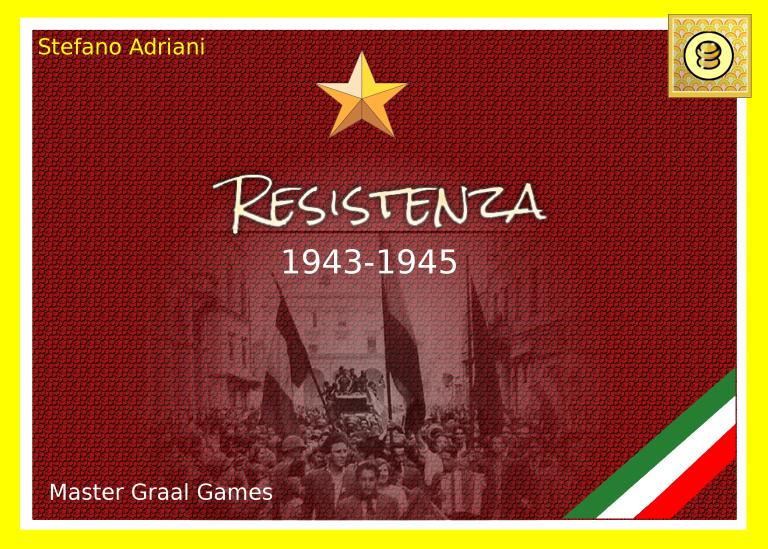Resistenza

Resistenza
In September of '43 Italy became the pivot around which revolved the fate of World War II. After the fall of Mussolini and the declaration of war to Germany, Italy overthrew the course of the war. Playing Resistance you can choose to control the partisans, aiming to spread over the country to get consensus and support. Or you can step into the role of the Axis, trying to stifle resistance or discredit it.
Resistance is a strategic light wargame with historical and political elements for 2 players, which assume the role of the forces of the Axis or the Partisans. The game map outlines the North of Italy, enclosed to the south by the Gothic Line.
When playing Resistance you should give up concepts such as the "front line" and "grouping military forces". On the opposite, Axis and partisan must aim to spread themselves all over the country: the Axis should try to surround and round up the enemies, while the partisan should try to exercise political control over the population.
The Axis player controls a number of variable military units (about 20): the exact number depends by the political situation. The partesan player controls from 1 to 50 partesan units: the exact number dependes by the consensus coming from civilian population. The partesan player goal is to control the territory, in order to recruit more people than those dying each turn (which is inevitable). On average the partesan player should be able to recruit about 30-40 units of partesan fighters during a play, and lose about 10-20. This implies that the partesan ends the game with about 20 units. Since the Axis players has about the same number of units, the player having the number supremacy at the end of the play wins the game.
Resistance is based on very light wargame concepts. The actual game engine is the struggle for getting control over territory and raising population support.
Resistance is a strategic light wargame with historical and political elements for 2 players, which assume the role of the forces of the Axis or the Partisans. The game map outlines the North of Italy, enclosed to the south by the Gothic Line.
When playing Resistance you should give up concepts such as the "front line" and "grouping military forces". On the opposite, Axis and partisan must aim to spread themselves all over the country: the Axis should try to surround and round up the enemies, while the partisan should try to exercise political control over the population.
The Axis player controls a number of variable military units (about 20): the exact number depends by the political situation. The partesan player controls from 1 to 50 partesan units: the exact number dependes by the consensus coming from civilian population. The partesan player goal is to control the territory, in order to recruit more people than those dying each turn (which is inevitable). On average the partesan player should be able to recruit about 30-40 units of partesan fighters during a play, and lose about 10-20. This implies that the partesan ends the game with about 20 units. Since the Axis players has about the same number of units, the player having the number supremacy at the end of the play wins the game.
Resistance is based on very light wargame concepts. The actual game engine is the struggle for getting control over territory and raising population support.
Player Count
2
Playing Time
180
Age
10
Year Released
2013